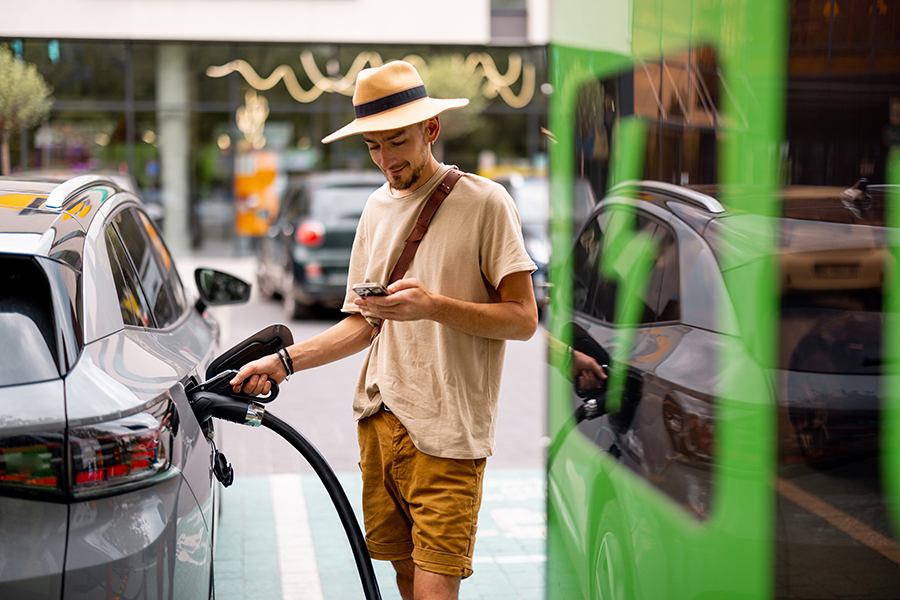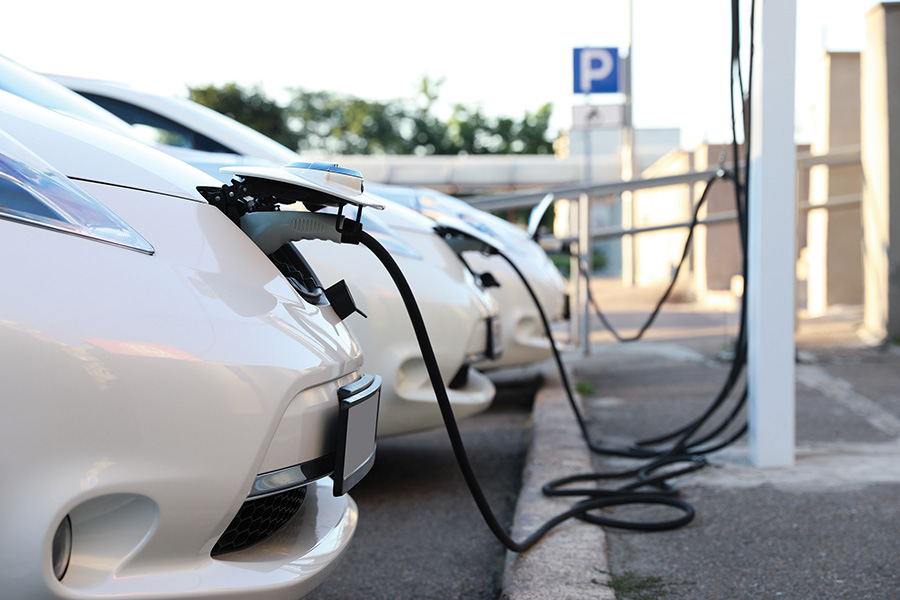Urbis recently developed a simple guide for the ACT Government on how to make EV ready developments. In the latest issue of SCN, Director of Transport Advisory, Graham McCabe, shares his insights on the installation of EV chargers and the benefits to shopping centres.
The Electric Vehicle (EV) revolution is happening, and will have a big impact on shopping centre car parks. With the National Construction Code (NCC) requiring 20% of car parking in new developments to be EV Ready, shopping centre owners and developers will need to rethink car park design and construction. EV ready is where a car parking space has all the necessary cabling, conduit and electrical supply (including switchboards, monitoring etc) to enable chargers to be installed either by the shopping centre or a third-party supplier.
Electric car sales already make up 8% of new car sales. This is primarily through the introduction of changes to Fringe Benefits Tax to incentivise the purchase of EVs and increased supply and range of vehicle models. Australia is following the same trend as experienced in the United Kingdom, mainland Europe, China and the United States, and will reach a tipping point with majority of new cars being EVs in the late 2020s.
So why charge at a shopping centre?
Most private EV charging happens at home for people with off-street parking. While this makes up most of the housing in Australia and some councils have installed on-street parking, some people will still need to charge away from home. Unlike Internal Combustion Engine (ICE) vehicles, EVs can be charged while other activities such as shopping, dining or entertainment are being done, giving the owner a top-up charge, similar to using a mobile phone charger. This convenience, while being legislated for new developments, can make shopping centres more attractive as a destination.
Charging by delivery vehicles is unlikely to be needed within the loading dock of a shopping centre and smaller delivery vehicles (vans) will be able to use standard EV parking spaces.

What type of charger should you install?
Car chargers come in two main forms – AC and DC. AC chargers can run off either 2-phase or 3-phase currents with up to 22kW/h of charging, while DC chargers currently go up to 250kW/h at 400V current. The selection of chargers should be based on their utility to the shopping centre. For example, a fast charger will take a Tesla Model 3 from 10% to 80% in 15 minutes. This is enough time for a top-up shop before the owner must return to their car to avoid the idling fees imposed by Tesla for being attached to a charger without charging. On the other hand, a 11kW charger will provide the equivalent of 90km per hour of charging.
Like the cost of parking a car within the shopping centre car park, the speed of the chargers should be optimised to maximise the shopping centre’s trade without discouraging visitation by people with electric cars.
Another consideration is the type and provision of a charging cable with the charger. Chargers can come without cables or with cables permanently attached, with four types of plugs used by vehicles – J1772, Chademo, Tesla and Combined Charging System (CCS). While many early adopters of EVs bought their own cables (and/or plug adaptors), thankfully most new EVs sold in Australia use the CCS (and CCSDC) system, meaning cables and plugs should be included with any charger installation unless it is a large-scale installation.
What additional issues must be considered?
Additional issues arise with third-party DC chargers. These can include the need for mobile phone coverage or free Wi-Fi to allow for payments, which can be challenging in underground car parks without adequate coverage.
Large car parks with an open plan and less than 20% of their parking on the perimeter will need to make allowance for charging infrastructure between parking modules, with pole-mounted chargers protected by bollards and larger DC chargers needing additional space and protection. Alongside this additional space, conduit and cable runs to the charger locations will need to be incorporated into the car park structural design.
If supplying chargers with cables and plugs, there comes additional maintenance and inspection requirements. While modern, commercial chargers have excellent safety systems and redundancy, if the equipment is vandalised or out of commission, drivers will become frustrated and may seek alternate locations for charging and expenditure.
Many car park operators are concerned about the potential of, and risks associated with fire from EV batteries having thermal runaway. The reality is that EVs have a lower fire risk than ICE (about one-twentieth the risk) and have around one-ninth the flammable material (lithium-ion battery vs petrol in the average car). While the insurance industry has flagged this as a risk, the market will settle as facts overtake misinformation.
So, what are the benefits to shopping centres of EVs?
EVs provide several benefits to shopping centres including a decreased demand for forced ventilation in car parks through reduced exhaust emissions, reduced noise and improved amenity. This means they don’t need to be isolated from the rest of the development. Open car parks will be quieter, meaning space closer to car parking and loading can be allocated to entertainment and food and beverage activities.
Most EVs are purchased on a novated lease as part of a salary package, with purchaser income ranges in the higher tax brackets, suggesting higher spending power. Making a shopping centre attractive for those who might want or need a top-up charge, but have multiple location options, makes sense.





















